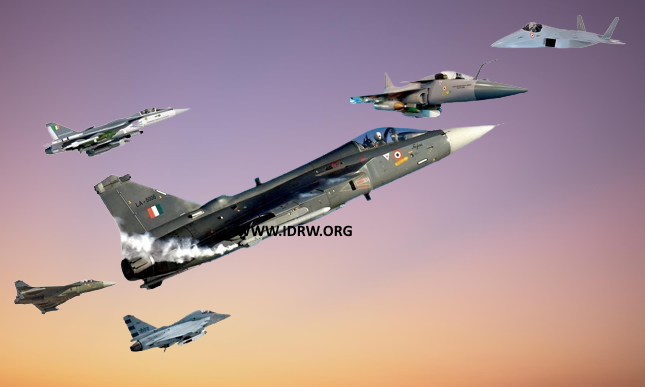SOURCE: RAUNAK KUNDE / NEWS BEAT / IDRW.ORG

The Indian Air Force (IAF) and Hindustan Aeronautics Limited (HAL) are gearing up for a critical phase in India’s indigenous fighter aircraft development. With the first flight of the Tejas MkII planned for 2026 and the Advanced Medium Combat Aircraft (AMCA) Mk1 expected to take to the skies in 2028, the coordination between IAF and HAL will be tested as they conduct simultaneous developmental flight trials for these ambitious programs.
The experience gained from the developmental flight trials of the Light Combat Aircraft (LCA) Tejas Mk1A is proving invaluable. Lessons learned are being utilized to refine and streamline the flight test regime for both Tejas MkII and AMCA Mk1. The goal is not only to reduce the number of years required for flight trials but also to minimize the total in-flight hours needed to validate the aircraft’s capabilities and readiness.
When the developmental trials for the LCA Tejas program began in the early 2000s, India lacked the local expertise to conduct a smooth and efficient flight test program. According to sources, the developmental phase faced numerous challenges. “We were taking one step at a time instead of running,” an individual associated with the program told idrw.org, highlighting the slow pace due to a lack of experience. This cautious approach resulted in a prolonged development period for the LCA Tejas, which first flew in 2001 but took many more years to achieve full operational capability.
In contrast, the Tejas MkII program aims for a significantly compressed timeline. From its first flight in 2026, the Tejas MkII is expected to undergo just four years of developmental trials before entering production. During these trials, the Aeronautical Development Agency (ADA) and HAL will focus on clearing basic weapons integration and conducting essential flight tests. After this, the IAF will take over to manage advanced weapons integration, ensuring the aircraft is combat-ready upon induction.
The AMCA Mk1 program, however, presents a more stringent and challenging set of flight trials. The AMCA Mk1, India’s first stealth fighter, will undergo over 1,500 flights in its developmental phase. Despite the increased complexity of testing a stealth platform, the program aims to complete its flight trials within five years from its first flight in 2028. This rigorous schedule underscores the confidence of ADA and HAL in their refined flight test procedures and their ability to leverage the experience gained from previous programs.
The overlapping flight test schedules of the Tejas MkII and AMCA Mk1 will undoubtedly test the coordination and resource allocation capabilities of both IAF and HAL. Successfully managing these simultaneous flight trials will be crucial for maintaining the momentum of India’s indigenous fighter development and ensuring that both platforms meet their targeted induction timelines. The lessons from the LCA Tejas program have laid a strong foundation, but the path ahead requires enhanced collaboration, precise planning, and efficient execution.
The next few years will be pivotal for India’s aerospace sector as it seeks to demonstrate its growing prowess in developing state-of-the-art combat aircraft. The successful execution of these programs will not only bolster India’s defence capabilities but also position it as a significant player in the global aerospace market.
NOTE : Article cannot be reproduced without written permission of idrw.org in any form even for YouTube Videos to avoid Copy right strikes. Websites doing illegal reproductions will get DMCA and Legal Notices.